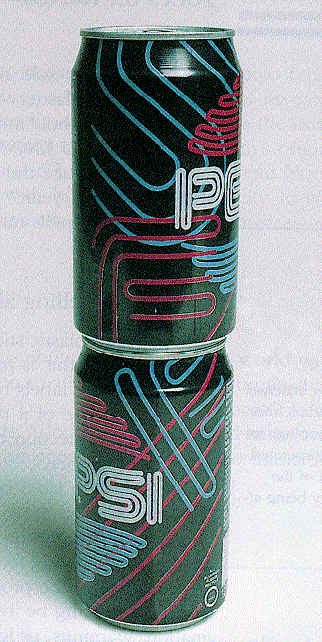Merry Monday!
JustHeath likes games. In fact, he is the co-sponsor for an Analog Gaming Club—get it?…non-digital. We recently had our last meeting for the semester (a Munchkin tournament), and I recalled a famous psychological study involving a classic game. Today, I’m going to share with you Dijksterhuis and van Knippenberg’s (1998) research about a unique way to enhance one’s chances of winning Trivial Pursuit.
Following Abelson, Frey, and Gregg’s (2004) model, I’m going to first give a little background, emphasize the first experiment, and briefly mention the highlights of the other three experiments of the study (Dijksterhuis & van Knippenberg, 1998). Readers may recall the feature image of this post as a special can design Pepsi used a number of years ago, but its use in this post may be slightly bewildering. First, I should point out that this image is often used in psychology—and marketing—classes as an epitome of subliminal messaging (a potential topic for another post). Can you see the thinly concealed word Pepsi wants consumers to associate with their product? Good. The idea here is that subliminal messages are used to try to tap into someone’s unconscious mind to influence their thoughts and subsequently behaviors. Well, most people and research debunks the actual efficacy of these methods, but you get the drift. Dijksterhuis and van Knippenberg wanted to see if they could prime participants in an even more indirect way to modify their accuracy in a game of Trivial Pursuit. They sorted 60 participants into one of three possible conditions related to thinking about a stereotypical job: no priming at all (control group), secretaries (neutral), and university professors (intelligence trait). After thinking about these typical groups, participants would write down their characteristics and things they really like to do. The goal was to indirectly prime the treatment group (thinking about university professors) into some sort of intelligent mindset in order to have them answer more questions correctly than the other two groups. Well, what happened? Take a look at the percentage of correct answers broken down into the three groups:
There was no statistically significant difference between the first two groups, but the treatment group was significantly higher than the other two. Therefore, just priming participants into thinking about an intelligent group of people actually affected their performance on a related task. Ain’t psychology (and this study) neat? The even more bizarre thing about this phenomenon is that we aren’t sure why it works…it just does; sure we have some theories but nothing conclusive. The follow-up studies found that this effect does not diminish over time, and direct priming works just as well as indirect priming.
“Oh my, JustHeath, that is nifty…if I want to win Trivial Pursuit. How can this be applied to other things?” Well, for me, the results make me wonder about potential applications in education. Before proceeding, I should point out that a lot of deception was used in the study, and the conditions were laboratory-controlled…real life is a good bit more complex; thus, the generalizability of the results is somewhat in question. Regardless, what would happen if educators used this approach before students took state testing? Could we prime students to perform better even though their knowledge level remained the same? However, these same “powers” could also be used for evil. Abelson et al. (2004) even reported a story in which minority students were reminded of their race before taking a standardized test; they performed lower than they should’ve personally and compared to other groups. In summary, activating people’s stereotypes and schemas can be an effective way of influencing their thoughts and behaviors. However, I’m wondering what readers may think about the deception involved in any potential priming solution. Do the ends justify the means? Take the poll, leave some comments, and stay psyched up until next week.
References
Abelson, R. P., Frey, K. P., & Gregg, A. P. (2004). Experiments with people: Revelations from social psychology. Mahwah, NJ: Lawrence Erlbaum Associates.
Dijksterhuis, A., & van Knippenberg, A. (1998). The relation between perception and behavior, or how to win a game of Trivial Pursuit. Journal of Personality and Social Psychology, 74, 865-877. doi:10.1037/0022-3514.74.4.865


After some consideration, I decided that I don’t find it morally acceptable to use deception to potentially help people. I know that the question is a little bit more complex but I question when the ends justify the means who determines the ends.